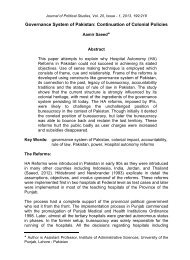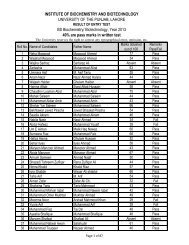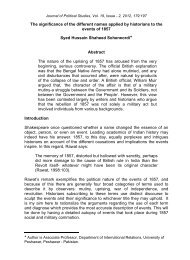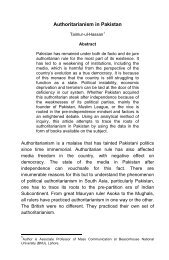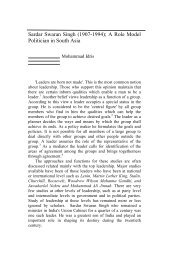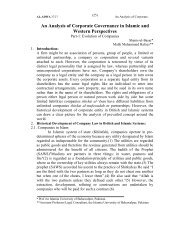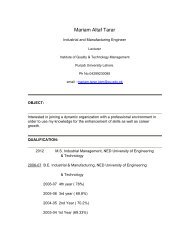Reconceptualising Domestic Violence as 'Domestic Torture'
Reconceptualising Domestic Violence as 'Domestic Torture'
Reconceptualising Domestic Violence as 'Domestic Torture'
You also want an ePaper? Increase the reach of your titles
YUMPU automatically turns print PDFs into web optimized ePapers that Google loves.
Shazia Qureshi<br />
anguish, humiliation, fear, isolation, and disintegration of self , similar to the<br />
psychological conditions of a prisoner in concentration camp or a political<br />
captive (Copelon, 1993-94: 313). Herman developed the term ‘complex post<br />
traumatic stress syndrome’ which would adequately describe the intense<br />
psychological symptoms of torture both upon the minds of battered woman<br />
and political prisoners (Hermand,1992: 77 & 119). She argues that violence<br />
inflicted by the state official may not necessarily be more annihilating than by<br />
intimate partner. It is rather argued, that the violence carried out by an intimate<br />
partner h<strong>as</strong> a potential to cause more psychological harm than violence<br />
inflicted by a strange state oppressor (Hermand,1992: 76-79). In summation<br />
what makes experiencing domestic violence excruciatingly painful in<br />
psychological terms is the element of breach of trust by the intimate partner.<br />
When violence comes from a source wherefrom it is le<strong>as</strong>t expected, the<br />
psychological trauma of the victim is quite understandable. Arguably, in that<br />
sense battering and torture could be treated at par, regardless of the level of<br />
harm endured or torturing techniques employed by the abusive partner or<br />
state official.<br />
The second element identified in CAT’s definition relates to the<br />
intention/purpose of the person who inflicts torture. Various commentators<br />
have given considerable attention to this <strong>as</strong>pect of torture, and there seems to<br />
be an agreement about the ‘common aim’ that any perpetrator of torture might<br />
seek to achieve. It is argued that the different techniques for torture are<br />
b<strong>as</strong>ically designed with a purpose to debilitate a victim’s moral resistance and<br />
to finally break his/her will (http://www.violenceisnotourculture.org<br />
/resources/%E2%80%9Cstrengthening-protection-women-torture-and-illtreatment%E2%80%9D-statement-manfred-nowak).<br />
As Compagnoni argues:<br />
Torture tends to the disintegration and consequent annihilation<br />
of the psychic and moral personality, to the non-physical<br />
destruction, practically speaking, of the human person, with<br />
long l<strong>as</strong>ting results (Peters, 1996: 87).<br />
A similar idea is presented by Edward when he concludes:<br />
It is not primarily the victim's information, but the victim, that<br />
torture needs to win - or reduce to powerlessness (Peters,<br />
1996).<br />
Just <strong>as</strong> torture aims to incapacitate the victims and control their will, the use of<br />
violence by the batterer tends to regulate the woman’s will. Attacks on<br />
person’s autonomy, integrity and selfhood to gain access to his/her mind are<br />
widely cited torture techniques. This can be achieved through a myriad of<br />
ways in the context of domestic torture, such <strong>as</strong> by placing constraints on<br />
women’s life choices including sexuality and restrictions on freedom of<br />
40




